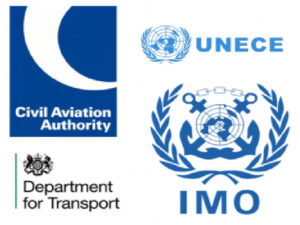The annual “Significant Changes and Amendments” publication, lists the changes to the 63rd edition of the Dangerous Goods Regulations (DGR) for 2022. There is only one bit of big news as this is an off-year for the ICAO Technical Instructions for the Safe Transport of Dangerous Goods by Air, the international regulation on which the IATA DGR is based. The Technical Instructions are only published in odd-numbered years.
People always ask “why is IATA then published every year?” If an airline reports incidents on the ground or in the air with a specific type of hazard, IATA are able to react faster by identifying a requirement that is more stringent than ICAO within the IATA regulations. This ensures that we continue to protect people, property and the environment without having to wait for the legislative process to go through its cycle.
What will we see for 2022?
One change is in how State Variations (extra requirements held by various countries) work. The State Variations (2.8.1) have been revised to include territories that are subject to the jurisdiction of a State where that State has advised of variations to the provisions of the DGR.” This can affect when a variation applies in regions that may not have direct sovereignty. For example, Christmas Island is a territory of Australia, and this clarification would mean that Australian variations would apply there. Check out sections 2.8.1.3 and 2.8.2 on the 63rd Edition to see all the new additions.
For those who are transporting Radioactive materials, changes have been made to DGR Section 10, to more effectively help shippers identify basic nuclide values for radionuclides not included in Table 10.3.A. In these cases, a statement must be included on the Shipper’s Declaration that Table 10.3.B has been used to determine the classification. And a new “Step 13” has been added to the procedures for completing the shipping document providing an example of this statement for the Shipper’s Declaration. The statement must include an indication of what type of radiation is emitted by the radionuclide in question.
The biggest area of change is lithium batteries. The most significant alteration is for the shipment of low-powered lithium batteries being shipped on their own as spares or without equipment. These have been tightly restricted over the last few years, with all stand-alone batteries restricted to Cargo Aircraft Only and “Section II” batteries being limited in the number of batteries or cells per package (not more than eight cells or two batteries). The airlines continue to add operator variations 2.8.3 to decline the movement of spare batteries under Section II completely.

The ICAO technical instructions 2023 will remove Section II standalone batteries UN3480 and UN3090. Therefore all low-level lithium batteries without equipment will be regulated: A Shippers Declaration, Acceptance Checklist and NOTOC will be required. IATA will implement this change in 2022. However, there will be a three-month transition period giving shippers sufficient time to adapt their processes and receive training outside of Adequate Instructions 1.6. Spare batteries under Section II will continue to be accepted until April 1, 2022.
Lithium batteries contained in equipment or packed with equipment (UN3091 and UN3481) are not affected by this change. They can still be shipped as Section II, with no current changes.
We will continue to watch out for the bigger changes coming for 2023. To help shippers plan, IATA has included, for 2022, a new Appendix I, which lists the planned changes for 1st January 2023, based on the anticipated revisions in the 2023-2024 ICAO Technical Instructions. These will include further changes to the details for shipping lithium batteries (of course!), revisions to classification procedures for corrosives, and some new packing instructions.
If you want to know what is coming down the pipeline give us a call.
To obtain a copy of the summary of changes for IATA, go to click here and you’ll get a link to download the free document in Adobe Acrobat PDF format.
Need help planning how to revise your shipping procedures? Contact us here at Logicom Hub to speak to one of our regulatory specialists.
Email: [email protected]



